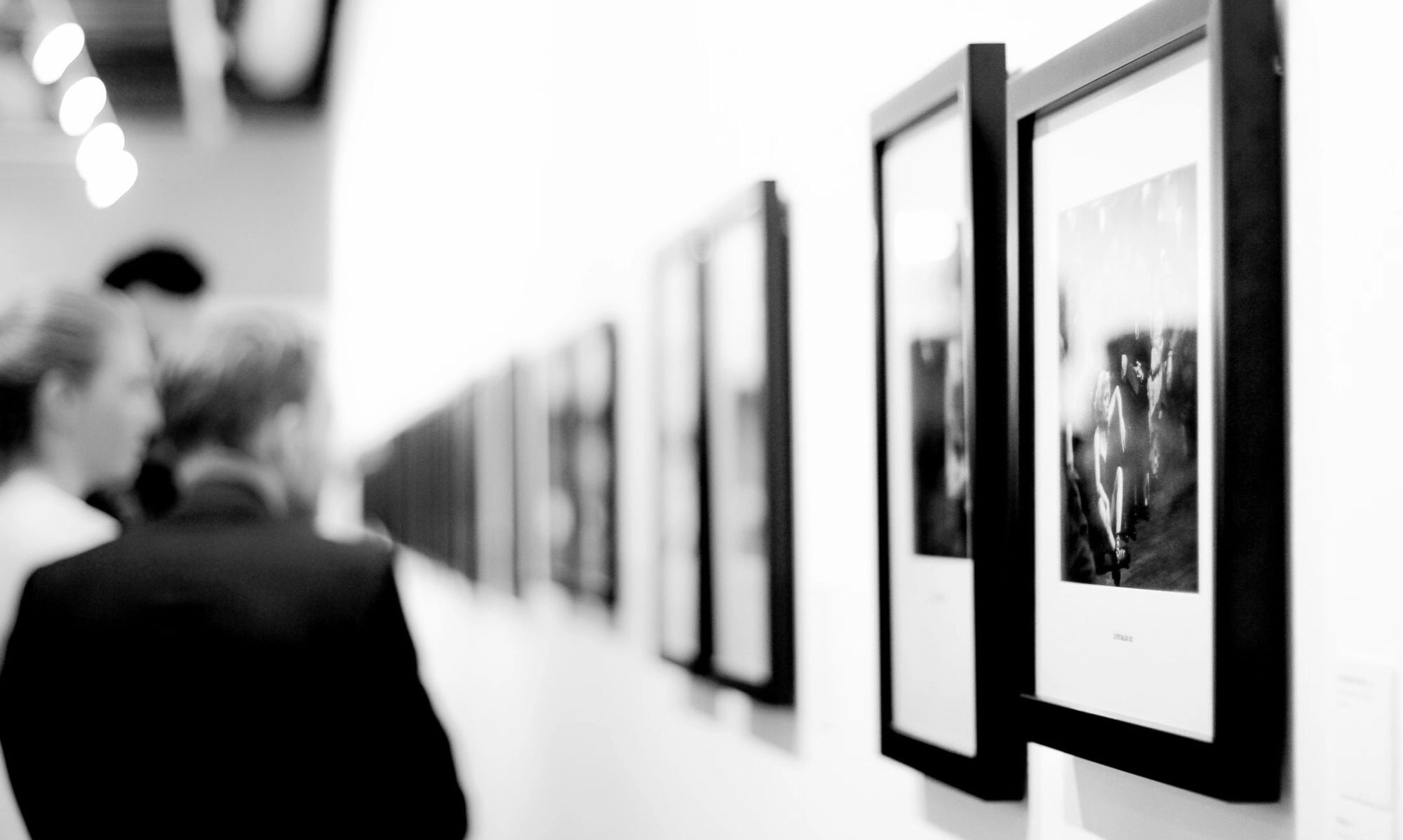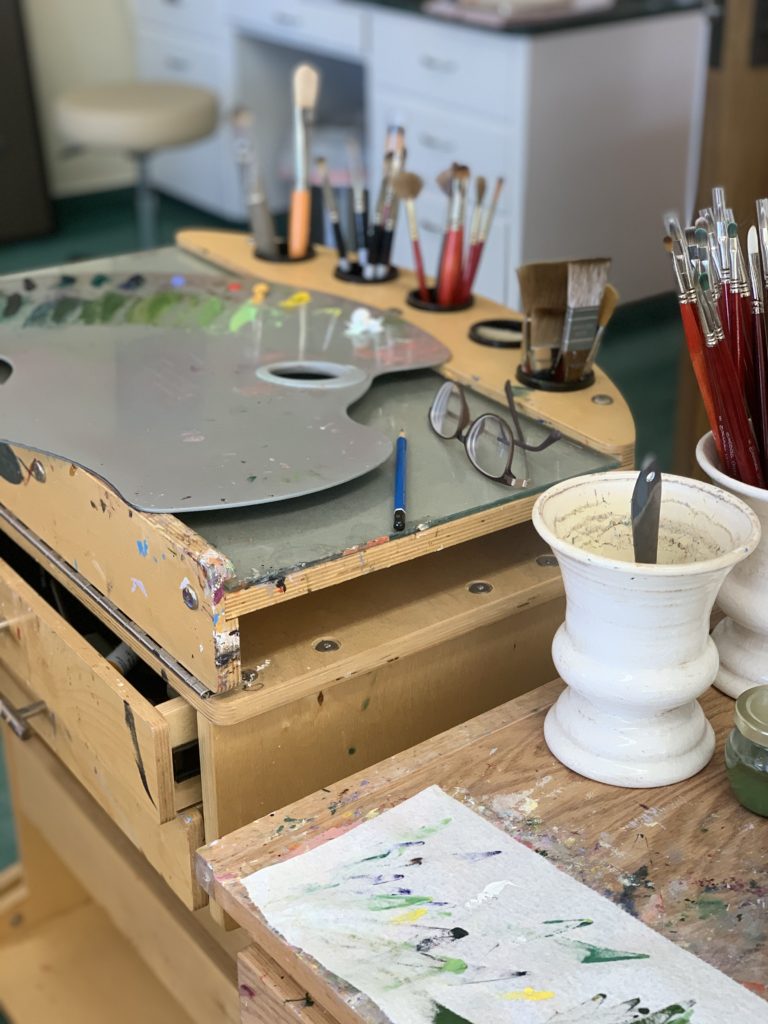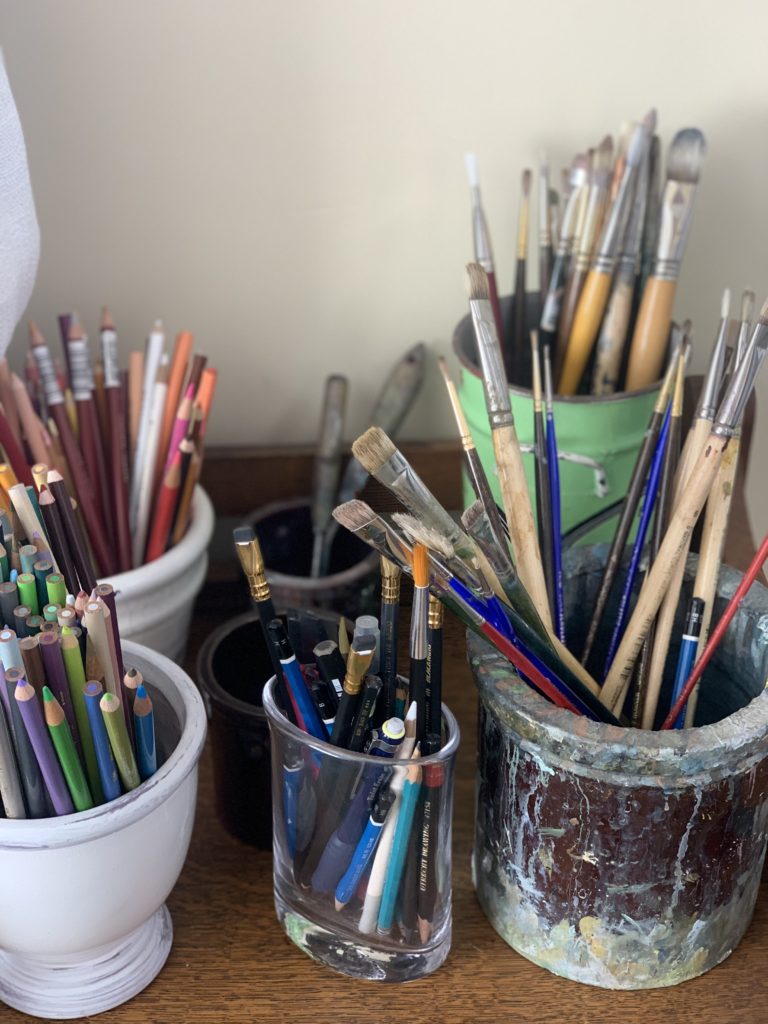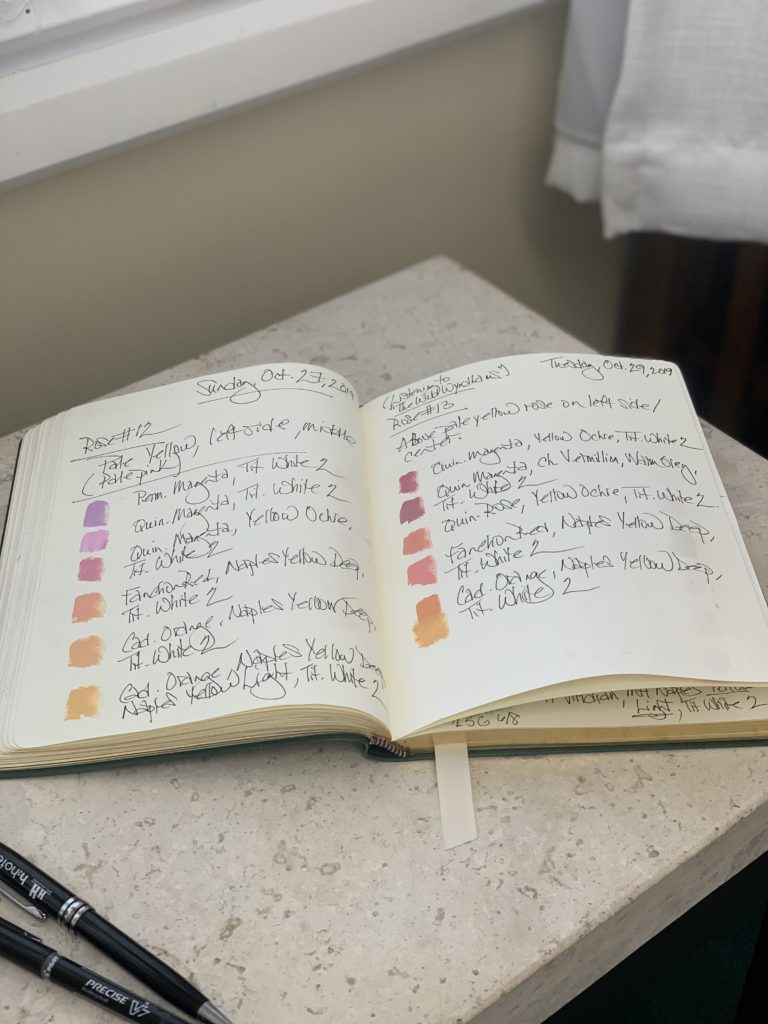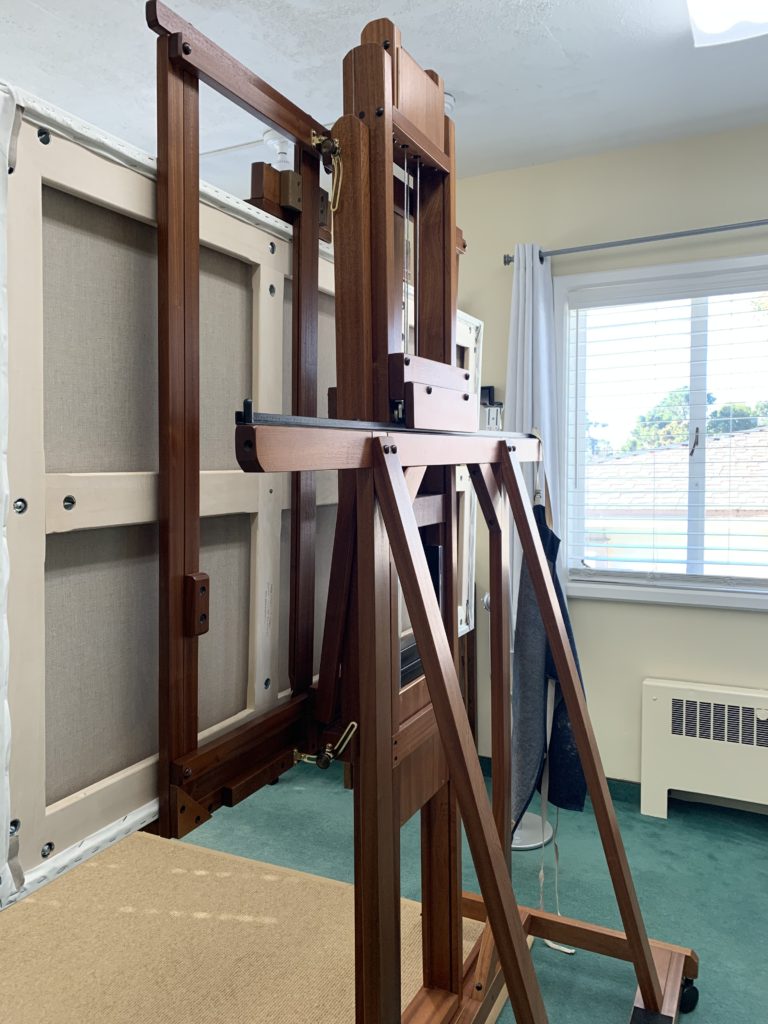31 Women – March 16th: Elizabeth Barlow
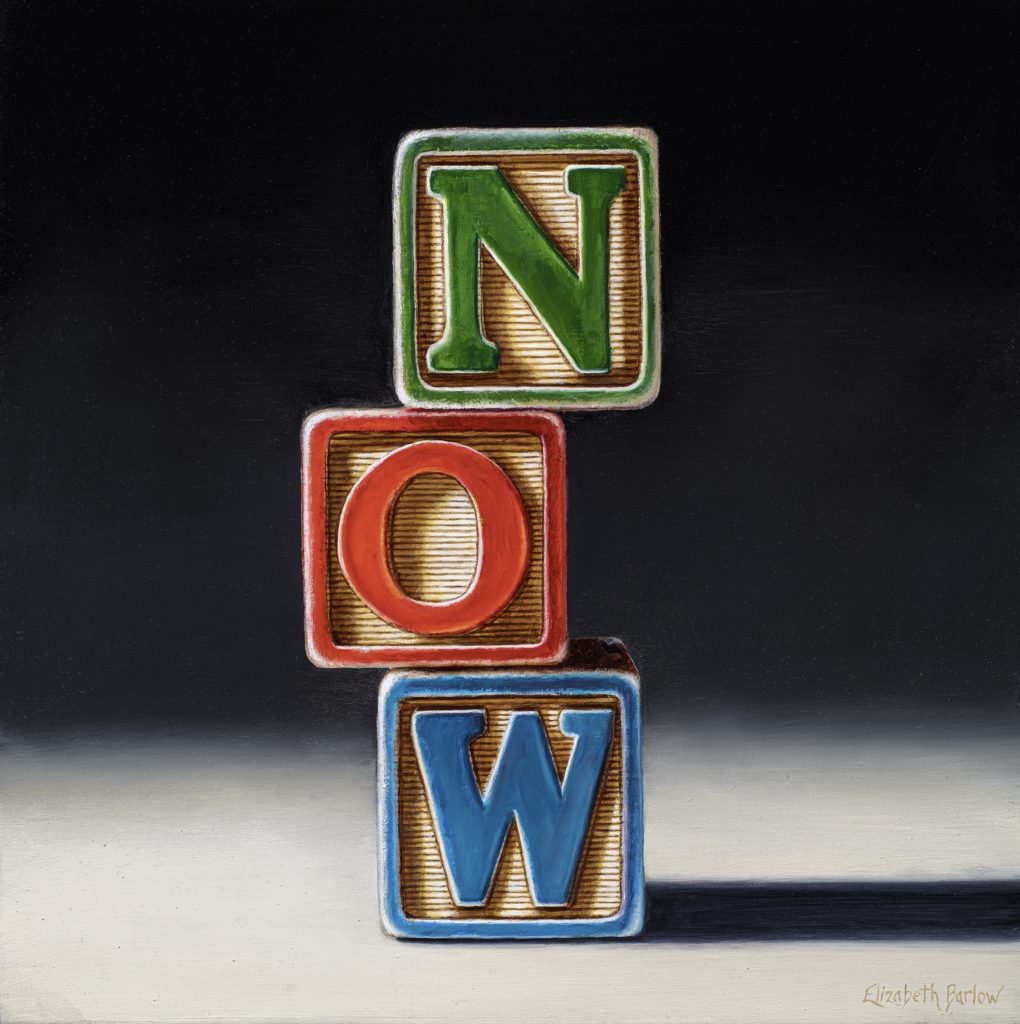
The Time is Now, 2020
Oil on linen
Courtesy of Andra Norris Gallery
An Interview with Elizabeth Barlow
MKM: Tell me about your childhood, where did you grow up? Were you always creative?
EB: I grew up in Salt Lake City, Utah, the daughter of an artist father (Philip Barlow, 1932-2018). I was always drawing as a child, our parents took us to art galleries at home and everywhere we traveled, and our walls were filled with my father’s paintings as well as the work of many other artists. I was always absolutely certain I would live a life creating SOMETHING, but it took me a while to find out where my true voice lies. In college, I studied theater as an actor, then journalism and finally history. For a while, writing was my passion. It wasn’t until I was a young adult and living in San Francisco that I woke up (I truly feel as if one day I awoke and knew what I wanted to do) and began practicing the craft of being an artist.
MKM: Tell me more about that day you “woke up”, why did you pursue art?
EB: One day, I was sitting on a bench in Tiburon, looking at the Bay and literally out of nowhere I thought “I am going to paint clouds.” This came out of nowhere, but I knew instantly that I needed to heed it. And it was at that moment that I understood that I had an intense desire to paint (not necessarily clouds though!).
I immediately told my father, and he said, “Well, then take a drawing class,” which I did. I can still vividly recall the sensation I had in those first art classes. I was by no means whatsoever the best student in those early classes, but I could FEEL in my hands and mind that I was going to be able to be good at this. My eyes, hands and brain needed some time to learn how to work in this new dimension — but I somehow knew in my bones that I was going to be able to make what I wanted to make — long before I actually COULD make it. I believe that this intense desire to create is the most potent proof of whatever “talent” anyone possesses. Yes, an acquired technique and experience play a part, but I feel that a desire to create and a daily devotion to the practice are the most important aspects of “talent.”
MKM: Where did you study art?
EB: My father was a huge influence on my development as an artist, although I never formally studied with him; he was a constant presence in my life with encouragement and critiques. I studied at UC Berkeley and obtained a Post-Baccalaureate Certificate in Studio Arts there. I also studied one semester at the Art Students League in New York City.
MKM: Are there any memorable teachers from your studies?
EB: Again, my father was one of my great teachers. My other greatest influences as teachers were Donald Bradford and Eva Bovenzi, both are well-known Bay Area artists. I took many classes with them at UC Berkeley and am grateful for their examples as working artists, encouragement, critiques and sharing of knowledge.
MKM: When you’re creating what’s your daily routine? Rituals, patterns? How has your practice changed over time?
EB: I’ve always been very disciplined in my practice. Since I am a realist, there is the stark fact that my artmaking requires a lot of time. For many years, I had a day job, and I rose every weekday morning at 5am and drew or painted in my studio apartment. For a time, I shared a studio with the artist Liz Fracchia, and I worked there every Saturday and Sunday.
Eventually, I began painting full time, and now my days revolve around a very devoted studio practice. I work 6-7 days a week in the studio, depending on deadlines. My studio time is spent drinking green tea, staring at the canvas, mixing the day’s palette, more staring at the canvas, breaking to check email or to have lunch, followed by more staring at the canvas, and of course, working on the canvas! I try to leave the studio each day at 5pm for a beach walk and an evening with my incredibly supportive husband. I believe that being a painter is like being a ballet dancer or a pianist — it requires a daily devotion to the practice. The great cellist, Pablo Casals was asked why, at 90, he continued to practice every day. He replied, “Because I see some improvement.”
MKM: Do you focus on a specific medium or combination of mediums?
EB: I am in love with oil paint — I love the lush sensuality of the paint. I love drawing with graphite, ballpoint pen, wax pencil and conté, but alas the pull of the canvas and the luscious quality of the oil paint keeps calling me away from the sketchpad.
MKM: What themes do you pursue?
EB: At the present time, I continue to create my series called Portraits in Absentia. In this series, I create still life “portraits” of people using cherished or symbolic objects rather than their faces to illuminate their characters and lives. I am also working on a series called Portraits of Gardens in which I gather flowers and branches from a particular garden and then create a deconstructed still life that celebrates the character of that particular garden or gardener.
MKM: What is your most important tool? Is there something you can’t live without in your studio?
EB: Ah, there are so many! Here are three: First, my late father’s brushes and palette knives. I don’t actually use them for fear of wearing them out — but they are talismans that speak to me whenever I see and touch them. Second, my Hughes easel — it was a birthday gift from my husband. Some women ask for jewelry or clothes, I asked for a custom easel. It is made of mahogany and is counter-weighted so that it glides up and down with just a touch of my hand. Third, my hundreds of art books. They are my daily companions, teachers; an oasis of calm and inspiration.
MKM: Among your works, is there a piece you are most proud of?
EB: My painting Portrait of a Marriage is a still-life of two pairs of mens’ formal dress shoes arranged as if they are in an embrace. They are the wedding shoes of my friends Jake Heggie and Curt Branom, who were married in San Francisco when gay marriages were first allowed. When I created the painting, my intention was to paint a celebration of my dear friends’ marriage. It was only later that I realized the painting carries a historical and cultural message as well. The painting has won awards in several national exhibitions and I’m happy to say now resides with Jake and Curt in their home.
MKM: What has been a seminal experience in your development as an artist?
EB: Studying at the Art Students League in New York City for one semester. (Former students include Georgia O’Keeffe and Mark Rothko.) Just to enter the building on West 57th Street is to inhale the wisdom and practices of over 100 years of great teachers and students. I studied there all day, five days a week for a spring semester — on easels covered with decades of paint, and by the light of the same skylights used by countless great artists — and came away from that experience feeling somehow anointed by the atmosphere and spirit of that place.
MKM: What art do you most identify with?
EB: The work of Georgia O’Keeffe, Claudio Bravo, Philip Barlow, Vanessa Bell, David Ligare, Martha Alf, Alison Watt, April Gornik and Rachel Ruysch.
MKM: What inspires you? Other artists, other women from history, your process, a theme?
EB: I am inspired by all art — dance, theater, painting, poetry — that speaks of the hidden, mysterious inner essence residing in each of us. In my own art, I continue to seek to find a way to express this hidden inner aliveness. The poet Mary Oliver always reminds me to be awake, to look and listen and perhaps then I will at last SEE into that inner mystery.
Whenever I need an energy boost, I turn to my books about ballet. The great American ballerina Maria Tallchief told her students “Ballet is like a religion.” What she meant is that it requires a religious devotion — to show up at the barre every day, no matter how much your body hurts and no matter what else is going on in your life. Just reading those words gives me energy and reminds me that my first duty is to show up at the easel — because it is in that showing up that the muses reside.
MKM: Do you have a sense of connection to a particular woman artist from art history?
Georgia O’Keeffe is my pole star. I believe that I own every book written about her. When my husband and I were first dating, he arranged for us to have a private tour of her home at Abiquiu — and that’s when I knew what a special man he is. O’Keeffe’s fierce devotion to her way of seeing, to her sense of self, and to the practice of her art are daily inspirations to me.
MKM: Who are your female role models from history or present day?
EB: Georgia O’Keeffe, Vanessa Bell, Anne Truitt, Mary Oliver, Suzanne Farrell, Rachel Ruysch, the Queen Elizabeths I and II (seriously!).
MKM: What’s the best piece of advice you’ve been given?
EB: When I first began taking art classes, my father said, “Decide who you think is the best artist in the class and sit next to her or him.” This has a double meaning for me: it means to not shrink back but to take one’s place next to “the best artist in the room.” And of course, it also means that I strive to continue to seek inspiration and wisdom through friendships and connections with artists whose work I admire. Artmaking is a solitary existence and I cherish my connections with other artists.
MKM: What is your dream project? What can we expect from you in the next year?
EB: I am just now completing a dream project — a 6-foot commissioned painting with a fascinating back story. It’s by far the largest painting and most complex painting I’ve done, and it’s whetted my appetite for big, complicated paintings! I dream of more opportunities to create big paintings with that tell amazing stories.
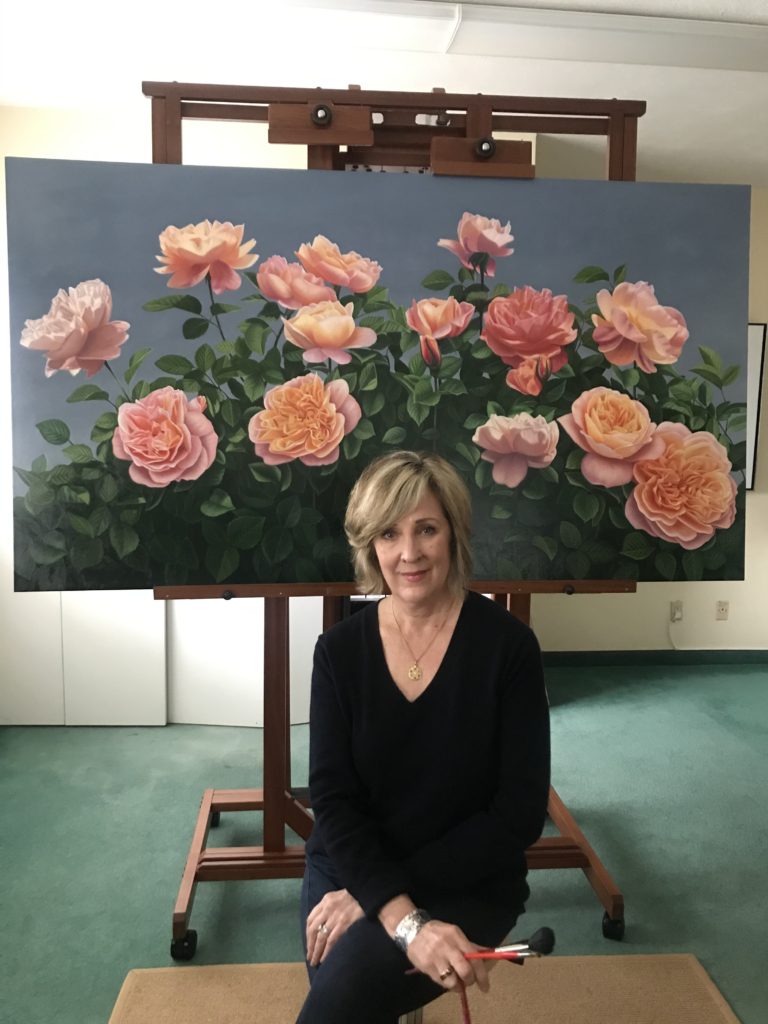
Oil on canvas
Elizabeth Barlow is represented by Andra Norris Gallery in Burlingame, CA
